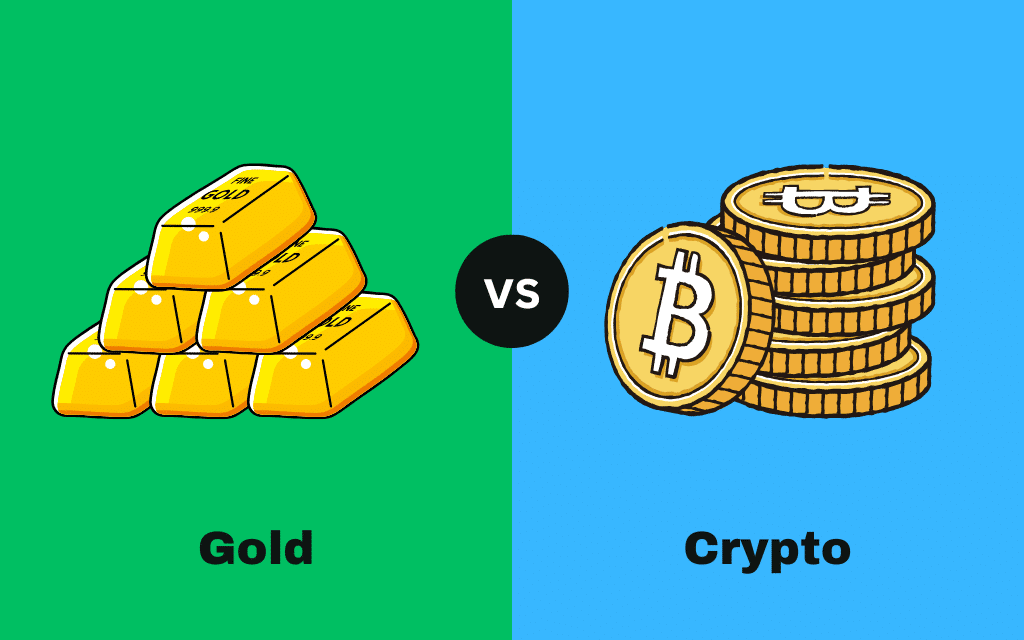A hot wallet is essential to trading cryptocurrency and performing crypto-based transactions.
Exchanges and third-party apps offer numerous hot storage options with plenty of flexibility and instant access to your private keys.
I spell out the benefits, risks, and differences to compare to store your crypto tokens safely.
Find a crypto IRA company to help you take control over your retirement savings.
What is a hot wallet?

A hot wallet is always connected to the internet to trade or transfer cryptocurrency instantly. Most crypto investors use hot and cold storage to protect their private keys.
Hot wallets are more common and ideal for daily transactions. Cold wallets provide more security for long-term holdings as they vault your private keys on an offline device.
How does a hot storage wallet work?
Crypto hot wallets store your public and private keys for on-demand trading, payments, and staking.
They are easy to set up and compatible with most exchanges, dApps, and cryptocurrencies.
They are ideal for frequent trading when you need quick access to your private keys.
Crypto IRAs may briefly move the balance you wish to trade, but generally keep 100% of your digital assets in cold storage.
Most crypto investors keep their trading balance in hot storage and transfer their long-term holdings to cold storage, where the private keys remain offline.
Hot and cold storage are both secure, although cold wallets are more difficult to hack into.
It’s easiest to start with an exchange-provided wallet for trading and a simple interface. Centralized exchanges like Coinbase and Kraken offer wallets, for instance.
You can also open an independent non-custodial wallet to self-manage your private keys and transactions across multiple crypto exchanges.
Consider this option when you prefer decentralized finance (DeFi) platforms and have more trading and technical experience.
Ease of access
Most offer login access by mobile app or browser extension. You may also be able to download a desktop app or log in through an encrypted web platform.
You don’t have to carry a standalone device as hardware wallets require. This convenience reduces the risk of a lost or stolen physical wallet.
Additionally, the constant connection to the network means you can instantly trade, transfer, or fund crypto-backed purchases.
Security
Overall, hot wallets are very secure and protected by multiple security measures.
It’s still vital to remember that 24/7 connectivity makes them more prone to malicious attacks. You should also be cautious before sending or receiving tokens from an unknown sender.
Common safeguards include:
- Two-factor authentication
- Biometric verification
- Strong passwords
- Encrypted servers
- Transaction limits
- Multiple addresses for asset segregation and privacy
- Malicious asset alerts
You can also create a seed phrase to unlock your wallet and avoid permanently losing access to your keys if mishaps occur.
This is also known as a “secret recovery phrase” that only you know.
However, a cold wallet is ideal for long-term storage thanks to its extra security safeguards. Specifically, they are disconnected from the internet and less prone to hacking.
Cost
ot storage wallets are usually free to download, but you pay these transaction-based fees:
- Network transaction fees: Also known as gas fees, this expense occurs when sending or receiving crypto. A portion pays validators or miners for transfers and staking. The fee is higher during peak congestion.
- Exchange trading fees: When buying, selling, or swapping tokens within your wallet.
Third-party partners usually set these fees, although the wallet company may keep a portion for development and paying the bills.
As a result, it is worth researching fees and saving money over the long run.
Types of Hot Wallets
There are several different hot wallets to choose from that can be exchange-specific or give you complete control of your keys.
Free wallets
Most hot crypto wallets are free to open as you simply download an app or software.
While there are zero upfront costs, you pay as you go for each deposit or withdrawal, and for add-on services like staking, swapping, or trading.
Free hot storage works well for many, but you may encounter several limitations:
- Supports fewer cryptocurrencies
- Limited third-party integrations
- Lack of advanced security measures (i.e., biometric verification)
- No priority customer support
Moreover, to keep the service free, the wallet may display ads or promote sponsored products. You may have the option to upgrade to a premium plan to avoid these nuisances.
You will want to see which altcoins your potential wallet supports. While most do, you should also verify the platform supports Bitcoin if you plan on buying the original crypto.
For example, it may only support Ethereum and EVM-compatible blockchains that can operate on the Ethereum network. As a result, it may not store Solana or XRP.
Paid wallets
Premium hot storage is an optional membership plan for most free wallet services.
ter a free trial, you will pay a monthly or annual fee.
You may also be able to pay for premium features through third-party partners that integrate with your preferred free wallet.
Membership perks include:
- Multiple wallets
- Reduced fees
- Multi-factor authentication
- Priority customer support
Overall, hot wallets with membership fees are uncommon.
Non-custodial wallets
Also known as self-custody wallets, you keep your keys in a non-exchange wallet. You have total control over your private keys with a seed phrase backup.
The primary benefits include holding crypto bought on multiple exchanges and being less susceptible to third-party errors and exchange hacks.
Non-custodial services may also not have Know Your Customer (KYC) requirements that can offer you more privacy.
Drawbacks include fewer customer support and account recovery options, and no custody insurance. They can also be more complicated and require more technical knowledge to operate.
Independent platforms and crypto exchanges offer non-custodial hot storage.
Consider the option if you want more liberty and are comfortable self-storing your crypto.
Custodial wallets
Cryptocurrency exchanges offer custodial wallets to store your keys through a trusted third-party custodian.
The exchange is responsible for protecting your private keys and you don’t entirely hold your keys.
These wallets are very easy to use and allow for instant trading. You also have more hands-on support and are less likely to permanently lose access as you don’t need to remember a seed phrase.
Your wallet custodian usually offers digital crime insurance that reimburses you if your assets are stolen or misused during an exchange attack.
Non-custodial wallets don’t provide similar coverage as you’re solely responsible for safekeeping.
Benefits & Risks
Below are the notable pros and cons of hot storage.
Benefits
- Instant liquidity: You can trade, transfer, and swap crypto 24/7 by accessing your crypto keys on demand.
- Easy to use: Custodial and non-custodial wallets are beginner-friendly by phone, desktop, or browser extension. You won’t need special hardware and can use multi-factor authentication to prevent fraud.
- Unlimited private key storage: A single wallet can store your private keys from compatible tokens and exchanges.
- Multi-factor security: At a minimum, your hot storage account is protected by two-factor authentication requiring email, text, or authenticator app verification. Biometric verification and multi-signature safeguards provide more peace of mind.
- No upfront fees: Setting up hot storage is free and you only pay fees when trading or transacting. You can offset transaction costs by earning staking rewards.
Risks
- Constant connectivity: Despite multiple security layers, being on-chain 24/7 means your keys are at continual risk of being stolen or exposed through online attacks.
- Potential incompatibility: Exchange-provided wallets may only support tokens that their platform supports. Non-custodial wallets may be limited to particular blockchain networks, requiring you to use several wallet providers to protect your keys.
- Limited insurance benefits: Crypto exchanges provide commercial crime insurance when storing your tokens in their custody wallet, but only select incidents qualify. Non-custodial wallets usually don’t have any insurance coverage.
How to Create a Hot Wallet Account
You can set up a crypto wallet within a few minutes:
- Choose a wallet: Research several providers and decide if you want a custodial wallet, non-custodial, or both. You should also determine if you prefer accessing your account by desktop, mobile, or web.
- Download software: The first step is to install the wallet app on your phone, tablet, or computer.
- Create an account: Many platforms have Know Your Customer protocols that verify your identity and can require uploading an official ID. You will also provide your contact details and choose a secure password.
- Develop a seed phrase: Non-custodial and self-custody wallets require a 12 or 24-word recovery phrase. Do not lose this or your account password as the provider doesn’t store your private information for account recovery.
- Fund your wallet: You can start trading cryptocurrency or transfer existing compatible digital assets for instant storage. Your provider should publish instructions to connect with exchange wallets and dApps. The platform will collect corresponding fees.
- Secure your account: Enable two-factor authentication and other security measures for maximum security.
- Keep small balances only: As hot wallets are more vulnerable to fraud, consider moving any crypto assets you don’t need for short-term trading or staking to cold storage.
3 Best Hot Storage Accounts
Here are three of the most used non-custodial wallets for quick online and in-person transactions.
MetaMask
MetaMask is ideal for using Ethereum-based cryptocurrencies and NFTs on decentralized apps. It is accessible by mobile app or browser extension.
Unfortunately, it’s neither incompatible with Bitcoin and non-ETH tokens nor offers a web platform.
Coinbase Wallet
Coinbase Wallet supports Bitcoin, Solana, and Ethereum-compatible networks by mobile app or browser extension.
This product is separate from the centralized exchange’s custodial wallet as it supports dApps, overseas transactions, and you have full control of your private keys.
Edge Wallet
Edge Wallet supports over 130 tokens, including Bitcoin, Ethereum, XRP, and Monero. It’s also beginner-friendly as you only need a username and password, since the platform doesn’t require a seed phrase.
However, it’s mobile-only for iOS and Android devices.
Are hot wallets safe to use?
A hot storage wallet is a safe way to store your crypto keys for daily transactions and frequent trading.
Multi-factor authentication and encryption thwart many threats, but the 24/7 on-chain connection is an inherent vulnerability that requires extra precautions.
To guard your keys, consider only keeping what you need in a hot wallet and transferring the rest to a cold wallet. For example, you can stake most cryptocurrencies from offline storage.
Both wallet types make it easy to start investing in Bitcoin.
FAQs
Do hot wallets have fees?
There are almost always zero account opening or ongoing membership fees. Instead, you pay as you go when trading or swapping with a fixed percentage fee.
Transferring crypto to or from your wallet incurs a variable network fee or “gas fee.”
Are hot wallets secure?
Hot wallets are pretty secure with two-factor authentication and bank-level encryption. However, they are more prone to account hacks since your private crypto keys always remain on chain.
Are hot wallets better than cold wallets?
Hot crypto wallets are better for frequent transactions requiring instant liquidity. However, cold storage is better for long-term storage as your private keys stay offline.
Find a crypto IRA company to help you take control over your retirement savings.





